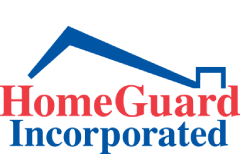The Nominees for Most Common Post-Close-of-Escrow Non-Disclosure Claims in Residential Real Estate for 2018 are….
By Real Estate Attorney David Hamerslough
If you are a movie lover, you know who received a Golden Globe and who has been nominated for an Oscar. In the spirit of the awards season, a colleague and I recently considered the nominations for the most common post-close-of-escrow non-disclosure claims in residential real estate for 2018. Those nominations are…
- Surface and Sub-Surface Water and Drainage Issues
While this type of claim often involves property that is sloped or on a hillside, it can arise on any parcel where there is a high water table or the ground contours and causes water to flow towards the foundation of the house or collect in the crawl space. Water can also enter into garages.
Efflorescence and stains may indicate a past or current issue. Efflorescence is a crystalline deposit of salts often seen on the surface of concrete, brick, stucco or natural stone surfaces. It occurs when water leaves behind salt deposits and is left on foundations or other areas of the structure. - Water Intrusion Through the Roof, Windows and Doors, or Exterior Lighting
Water intrusion of this nature can lead to dry rot, fungus, decay, and mold, especially when the water reaches the wall cavities of the structure. There are instances where these conditions are not visible. Evidence that they may exist includes staining and/or indications of past repairs (including patching, taping, putty, caulking, or foam). These repairs could exist on the interior of the residence, in the attic space, or at joints where flat surfaces such as decks or balconies meet exterior vertical walls.
One limitation in residential real estate is the general inability to conduct any destructive or invasive testing. Recommendations for this type of investigation are often found in pest control reports and are identified as inaccessible areas or areas in need of further inspection. It may be possible for a small probe to be inserted in the wall cavity to detect the level of moisture or other adverse conditions. Most purchase contracts do not currently allocate Section One and Section Two pest control liability as they once did. In that situation, a specific request is going to need to be made to the seller whether they will allow the buyer to access these inaccessible areas or conduct further inspections. - Soil and Related Settlement Issues
There are areas in Santa Clara and San Mateo County that contain expansive soil or were at one time old riverbeds or other areas that collected water. Seasonal temperature fluctuations cause this soil to expand and contract. The result may impact, among other components, the foundation of a structure, whether the floors in that structure are level, and whether doors and windows operate properly. This soil movement may also result in cracking in the interior sheetrock or exterior stucco.
What do we know about the issue or condition? This includes the nature and extent of the issue or condition, how long it has existed, what repairs or work has been done to address the issue or condition, when was that repair or work performed, by whom, what are their qualifications, were permits obtained, were they finaled, has the issue or condition recurred, if not, why not (lack of rainfall, etc.). - Permits and Zoning/Land-Use Issues
The first issue is to recognize that there is a distinction between permits and permissible use of land. The most common type of permit is one issued by a building department for the construction of all or a portion of a structure or some other activity on the property. It is important that the permit is finaled and is for the work that was actually completed. Just because a structure exists, that doesn’t mean it has finaled building permits. It is also important to understand that merely because the building department has issued a permit, that does not mean that the planning or zoning department of a governmental agency will recognize that the construction meets their standards. For example, adding onto a structure in excess of what the permissible lot coverage allows for can be a form of noncompliance with those regulations. Other examples would include a structure that encroaches into a setback or the conversion of part of the structure (e.g., the garage) into living space. These issues are separate and distinct and must be dealt with accordingly. Assistance in evaluating these issues can be provided by, among others, a qualified land-use consultant, architect, or other professional. A good way to locate a qualified consultant is to contact the governmental agency and ask if there are former employees who are now working as private consultants. - Neighbor Disputes
This subject includes more than just property line, fenceline, and shared-use issues. Unfortunately, sometimes neighbors don’t get along and have a history that can include noise and other nuisances, damaging, removing, or interfering with a neighbor’s use of their property and/or structures thereon, and so on. Occasionally, these disputes escalate into verbal and/or physical altercations. Sometimes, neighbors just act or behave in ways that other people might find unconventional. Whatever the issue, full and complete disclosure is important. - Square Footage and Lot-Size Issues
The square footage of a structure and the lot size of a property can be important to some buyers and may have an impact on the use or development of the property. Issues related to these subjects still prompt claims when, among other things, assumptions are made, inconsistencies are not investigated, or the significance of these issues to the use or development of the property is not evaluated. The PRDS Advisory has helped reduce the number of claims on these subjects, but if an issue does arise, it needs to be evaluated by a qualified professional.
When any of these top six issues are present, it would be prudent for buyers to ask follow-up questions. Some of the questions a buyer might ask include the following:
- What is known about an issue or condition, including but not limited to the nature and extent of the issue or condition, how long it has existed, what repair or work has been done to address the issue or condition, when that repair or work was performed and by whom (and what that person/entity’s qualifications are), were permits obtained and finaled, does the repair or work conform to zoning and/or land-use ordinances, was there any investigation of the issue or condition by the seller or others, what documentation exists on any of these subjects, and has the issue or condition recurred (and, if not, why not [lack of rainfall, etc.]?
- What are the qualifications of the people providing the answers to these questions, what knowledge, training, skill, or experience do the seller and buyer have with respect to these issues and conditions, and what inquiry can be made and of whom regarding these issues and conditions?
- How do these issues and conditions impact the buyer’s current and/or future needs and wants?
- How do these issues and conditions impact the buyer’s decision-making process or the transaction?
- Finally, to what degree do the seller’s disclosures, the agent’s AVIDs, and the home inspection reports address any of these issues or conditions, and does any of this information leave unanswered questions for which follow up is needed?
The foregoing is a brief list of the types of questions that a buyer might ask. The specific questions will turn on the facts of the transaction, the buyer’s present and future needs, wants, and concerns, the buyer’s knowledge and experience, and the type of property, among other issues.
I hope you’ve enjoyed this feature presentation. If you don’t agree with these nominations, let me know.
About David Hammerslough
In his 35 years of practice, Dave Hamerslough has litigated and arbitrated residential and commercial real estate disputes on behalf of brokers and agents, buyers and sellers, and landlords and tenants. Dave also acts as a mediator and arbitrator of real estate disputes. He also teaches courses and writes articles on these subjects to brokers, agents, attorneys, and consumers.
A Home Inspection is Important When Buying a Resale Home in the Bay Area, Central Valley, or San Diego Area
HomeGuard is equipped to deliver superior home inspection services. Our Home Inspectors are carefully selected for certification based on technical skills and professionalism. We can arrange for a Home or Roof Inspection at the same time you call to make an appointment for your Termite Inspection, another timely and cost effective way of meeting your needs.




